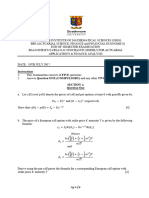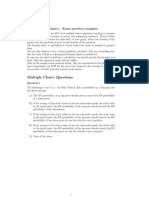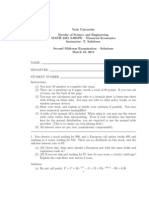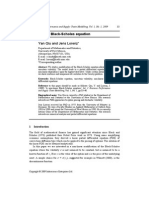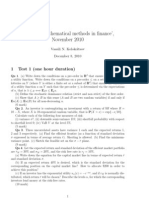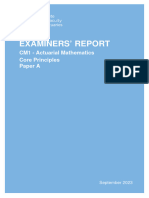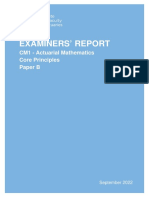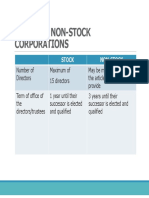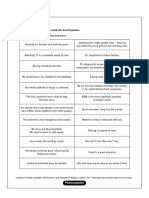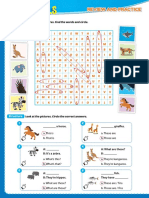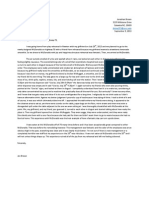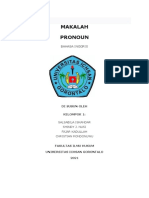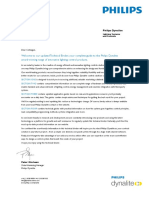0% found this document useful (0 votes)
95 views22 pages473 S15 Practice Problems Final
This document contains practice problems for a final exam in a statistics course, focusing on options pricing and financial derivatives using the Black-Scholes framework. It includes various scenarios involving European call and put options, delta hedging, and martingale processes, along with a solution key at the end. The problems require knowledge of financial mathematics and the application of concepts such as elasticity, delta, and profit/loss calculations.
Uploaded by
Foo Zi YeeCopyright
© © All Rights Reserved
We take content rights seriously. If you suspect this is your content, claim it here.
Available Formats
Download as PDF, TXT or read online on Scribd
0% found this document useful (0 votes)
95 views22 pages473 S15 Practice Problems Final
This document contains practice problems for a final exam in a statistics course, focusing on options pricing and financial derivatives using the Black-Scholes framework. It includes various scenarios involving European call and put options, delta hedging, and martingale processes, along with a solution key at the end. The problems require knowledge of financial mathematics and the application of concepts such as elasticity, delta, and profit/loss calculations.
Uploaded by
Foo Zi YeeCopyright
© © All Rights Reserved
We take content rights seriously. If you suspect this is your content, claim it here.
Available Formats
Download as PDF, TXT or read online on Scribd
/ 22








